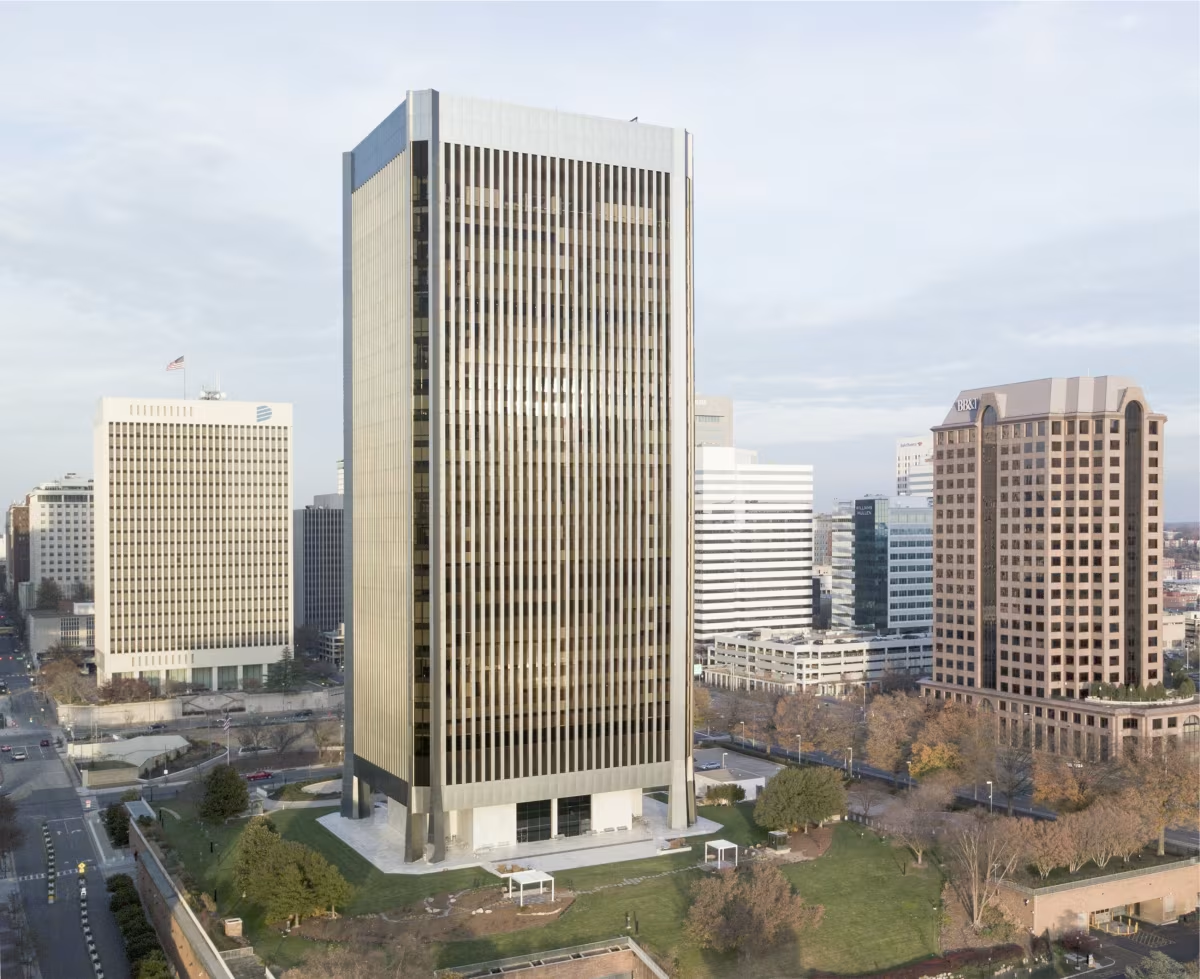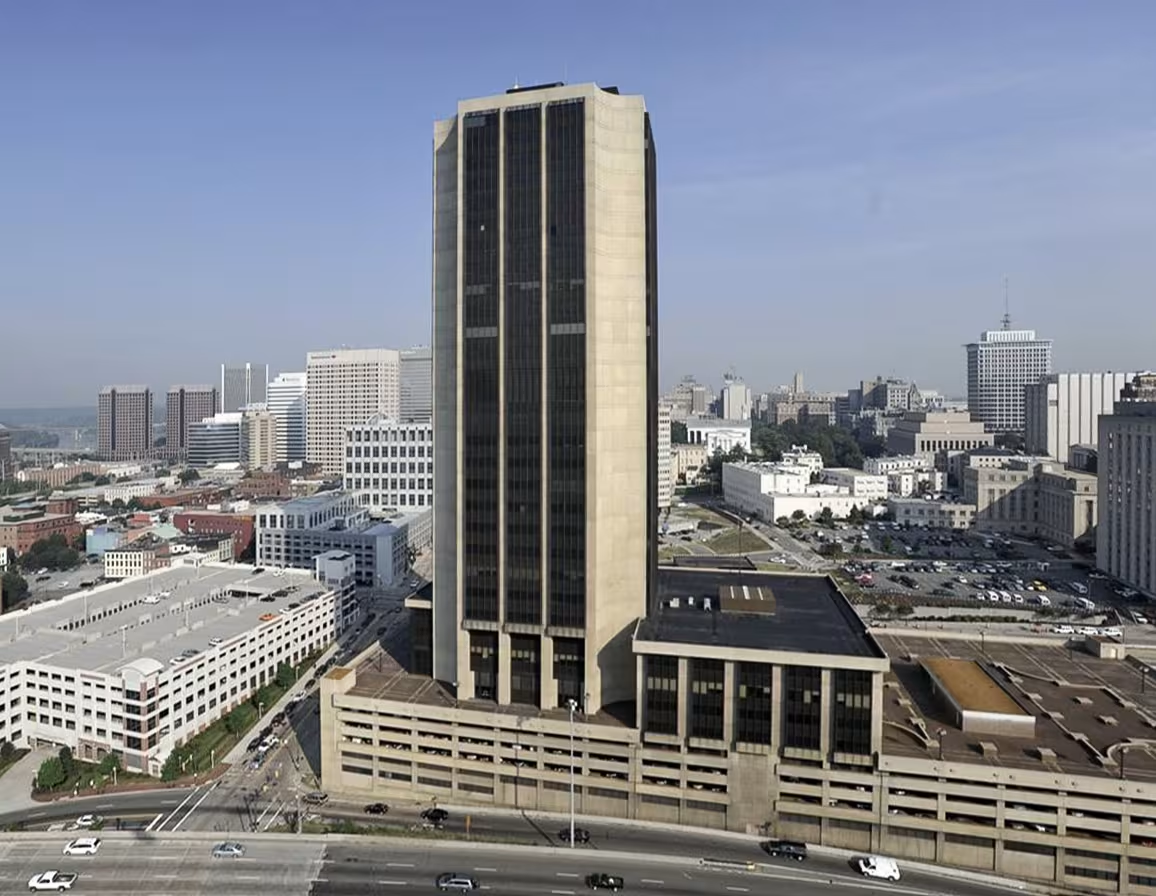Federal Reserve Bank of Richmond Building vs James Monroe Building


Comparing the Federal Reserve Bank of Richmond Building and the James Monroe Building is interesting because they both stand in Richmond, VA, and were completed within 3 years of each other, but they were designed by different architects.
This offers a unique glimpse at how rival designers approached projects in the same city during the same era.
Height & Size
The James Monroe Building is clearly the larger tower of the two, both in terms of height and number of floors. It rises to 449ft (137m) with 29 floors above ground, while the Federal Reserve Bank of Richmond Building reaches 394ft (120m) with 26 floors above ground.
Of course, each project may have faced different briefs or regulatory constraints, which we don't really know about and could also explain the outcome.
Architectural Style
Both the Federal Reserve Bank of Richmond Building and the James Monroe Building were designed in line with the aesthetic conventions of the International Style style.
Both buildings were completed when the International Style style was already past its peak. This makes them feel like late echoes of the movement, more reflective of continuity or nostalgia than of cutting-edge design at the time.
Uses
The Federal Reserve Bank of Richmond Building is primarily commercial, while the James Monroe Building is primarily governmental.
The Federal Reserve Bank of Richmond Building also provides 520 parking spaces.
Structure & Facade
Both the Federal Reserve Bank of Richmond Building and the James Monroe Building rely on a Frame structural system.
A frame structure uses a grid of columns and beams to carry the building's loads. This frees the walls from structural duties, allowing for flexible floor plans and larger windows.
They also employ the same type of facade, a Curtain Wall facade.
A curtain wall is a non-load-bearing facade hung from the structural frame. It is anchored to floor slabs and transfers only its own weight and wind loads, allowing for sleek, glassy exteriors.
| Federal Reserve Bank of Richmond Building | James Monroe Building | |
|---|---|---|
| Minoru Yamasaki | Architect | Ballou, Justice & Upton Architects |
| 1972 | Design Ended | 1968 |
| 1978 | Year Completed | 1981 |
| International Style | Architectural Style | International Style |
| Commercial | Current Use | Governmental |
| 26 | Floors Above Ground | 29 |
| 120 m | Height (m) | 137 m |
| Frame | Structure Type | Frame |
| Steel | Vertical Structure Material | Steel |
| Concrete And Steel | Horizontal Structure Material | Steel And Concrete |
| No | Facade Structural? | No |
| Aluminum, Glass | Main Facade Material | Limestone, Glass |
| Daniel & Company | Main Contractor | J. Kennon Perrin |
| VA | State | VA |
| Richmond | City | Richmond |
| 701 East Byrd Street | Address | 101 North 14th Street |